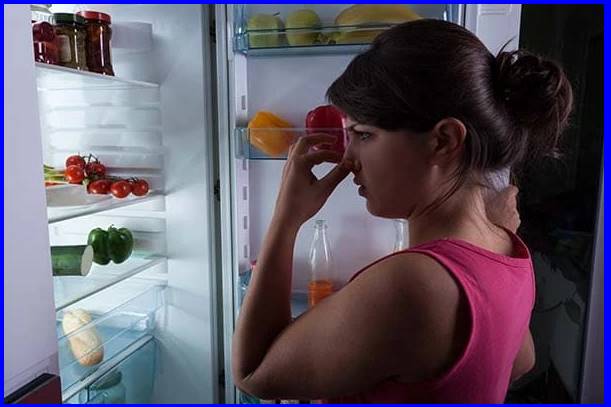What to do when your fridge water tastes bad?
Refrigerator water dispensers must be one of those first-world conveniences that is easy to overlook. The water is clear, refreshing, and typically clean attributable to inbuilt filters. Notwithstanding the filtering, the water that comes out occasionally tastes horrible.
Even brand-new refrigerators are not immune to the challenge. Other times, it begins later and becomes worse over time, till the water seems awful. This can occur in any refrigerator with a dispenser, notably Whirlpool, Samsung, and basically any other manufacturer.
This is a simple repair in some circumstances. However, this is not always the case. When it relates to modern global refrigerators, even experts may require assistance in resolving water concerns.
“In regards to the water given through the refrigerator, companies have perfected their systems over the years to avoid flaws in the system whereby water may age or stand still,” writes Bob Tuck, a Mr. Appliance business owner in Florida, in an email. “With this in mind, our repair technicians will frequently be supposed to depend on the supplier to direct them to presume equipment or issues of interest.”
Let’s look at some professional advice on how to restore the taste of your stale refrigerator water.
1. Make a filter adjustment
The issue isn’t always with the filter. However, this is frequently the case.
“It’s possible that [the unpleasant taste] is caused by a problem with the water system, sewage, mildew, or microorganisms,” explains Jake Romano of John the Plumber in Ottawa, Canada. “However, in fact, it’s the filter.”
Filters for refrigerator water dispensers do not last indefinitely. You must change them every six months on usual. If you’ve only updated your filter once, say 5 years earlier, this may be your epiphany moment.
Filters that are properly functioning remove a variety of pollutants from drinkable water, including chloride, volatile organic compounds (VOCs), and other pollutants, dependent on your area and water source.
Filters aren’t particularly sophisticated. They do not address issues such as heavy metals or other potentially dangerous conditions. A recycled water filter is a cheaper route for impurities like these.
Uncompressed water will scoot right about by filter elements as well as slosh straight into your glass as the filtration ages and becomes overloaded with grody gunk. It’s for this purpose that you may detect an “odd” odor or flavor.
Examine Your Water Supply:
One cycle of filtration wouldn’t be enough to remove leftover aromas and flavours that lead to a nasty taste if your freshwater is very poor.
“A stench like rotten cabbage, sulphur, or metal cannot be a warning of a faulty water faucet, and it can lead to bad piping, a blockage in the system, or water supply interruptions,” writes Stephany Smith of Fantastic Services in London in an email. “To determine whether the issue stems from your pipework, water source, or the faucet itself, smell the tap water.”
To put it another way, if the water from most of your pipes, not just the refrigerator, tastes strange, you obviously know the fridge isn’t the issue. It’s your water, after all.
Fine particles may permeate what is ordinarily a sealed structure if utilities employees have repaired fractured pipes or somehow worked on surrounding pipelines, according to Smith. You might detect scents or flavours that wasn’t there before once the supply is reconnected. Thankfully, once the pipes have been cleansed with clean water, the problem usually goes away. However, when situation goes out of hand, you can also consider Appliance Repair Kelowna BC since an expert can also guide you well regarding your concerns.
Inspect to see if the dispenser is brand new or hasn’t been used before:
If your fridge is left unattended for a lengthy amount of time without dispensing water, the water in the lines may begin to taste unpleasant. Flowing fresh water for a moment or two can also help to improve the flavour.
“Press and release the dispenser handle, plunger, or push key at five-second increments to liberate any air pockets. Continue this method until you have dispensed 10-15 bottles of water to guarantee you are consuming clean water “Smith says.
She warns that if it’s a new refrigerator, the water mains may have gathered dust and particles throughout the production process, creating a health danger to everyone who drinks the water.
To disinfect the pouring spout, she suggests washing it with purified acid from within
“When you begin, turn off the water supply and the tube into which you will pour 2-3 cups of distilled vinegar. Allow the vinegar to settle for a few moments before flushing the system with around 2 litres [8.5 cups] of water “she explains.
Final words:
Maybe if the issue isn’t with the water in your fridge, but with the ice? Some of the previous recommendations may potentially work, as well as clearing out the storage box. Mr. Appliance’s Bob Tuck recommends removing all ice storage elements and washing them in the dishwashers on a regular basis.
Can a Passenger Sue if the Luggage Compartment Opened?
What to do when your fridge water tastes bad?
